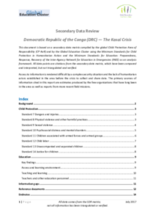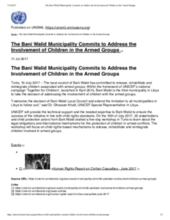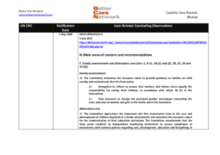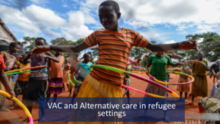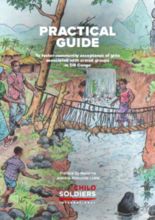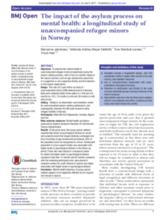Displaying 301 - 310 of 516
In order to strengthen policymakers’ and humanitarian actors’ responses in countries of transit and destination, this study was designed to shed light on young people’s decision-making and preparedness levels, the mechanisms shaping their migration trajectories, and their expectations on the way to Europe.
This document is based on a secondary data matrix compiled by the global Child Protection Area of Responsibility (CP AoR) and by the Global Education Cluster using the Minimum Standards for Child Protection in Humanitarian Action and the Minimum Standards for Education: Preparedness, Response, Recovery of the Inter-Agency Network for Education in Emergencies (INEE) as an analysis framework.
The local council of Bani Walid, Libya has committed to release, rehabilitate and reintegrate children associated with armed groups.
This country care review includes the care-related Concluding Observations adopted by the Committee on the Rights of the Child during the seventy-fifth session (15 May 2017 - 02 Jun 2017) of the Convention on the Rights of the Child.
This UNHCR presentation provides an overview of alternative care for children in East African refugee contexts.
This guide is presented as a “toolbox” to help DDR actors respond to the needs of girls formerly associated with armed groups in eastern DRC, and to overcome the many obstacles to their release and reintegration, reported by some of the girls themselves.
This report presents the findings of research conducted by Child Soldiers International to assess the effectiveness of release, psychosocial recovery and reintegration interventions for girls associated with armed groups in eastern Democratic Republic of Congo (DRC).
This report describes the findings from a research study on the protection of children fleeing from the Syria conflict and traveling to Europe.
This study examined the mental health of unaccompanied refugee minors during the asylum-seeking process, with a focus on specific stages in the asylum process, such as age assessment, placement in a supportive or non-supportive facility and final decision on the asylum applications.
During this webinar on Thursday, May 11th, 2017, the second in the series of webinars organized by the Initiative for Child Rights in the Global Compacts, two experts Mike Dottridge and Professor Jacqueline Bhabha outlined their current work on one of the key outputs of the initiative: a working document entitled “Child Rights in the Global Compact”.


